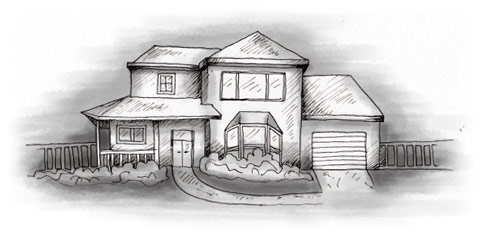The registration of rights in land and other immovable property is regulated by the Deeds Registries Act, 1937, and South Africa boasts one of the world’s most efficient and sophisticated systems of land registration. Every piece of land is shown on a diagram and ownership recorded in one of the regional Deeds Registries, where documents are available for public viewing. The system does provide owners with security of title (unlike those of some other countries!).
Although South Africa still recognises an old system of 99-year leasehold, the main real right in land is that of ownership, similar to the UK system of freehold title, and most land in South Africa is privately held by outright ownership. The separate ownership of buildings or parts of buildings in a development is recognised by the Sectional Titles Act, 1986.
South Africa is rich in mineral wealth and the Mineral and Petroleum Resources Act, 2002 separates the rights to minerals in and under land from the ownership of the surface rights to the land, so buying a property in South Africa doesn’t entitle you to set up a gold mine in the garden!
Redistribution
Since 1994, the ownership of land in South Africa has been the subject of a number of legal and administrative changes, and the international media sometimes carry scare stories claiming that South Africa’s policy of ‘land redistribution’ might lead to a Zimbabwe-style land grab, white owners being thrown off their land with no compensation or, worse, being attacked and perhaps even killed. Ironically, the disastrous situation in Zimbabwe and the resulting international outcry have probably done as much as anything to ensure that South Africa will not be tempted to go down the same path.
Under the old colonial system, 87 per cent of South African land was owned by around 60,000 white farmers or by the state. In 1993 the World Bank warned that, if South Africa didn’t undertake ‘a major restructuring of the rural economy centred on significant land transfers and smaller scale agricultural production units’, the country would be in danger of rural violence, perhaps even civil war. The following year, with the Restitution of Land Rights Act, the first post-apartheid government undertook to consider claims from people who believed they’d been unfairly forced from their land during the apartheid years, and to transfer state-owned land to disadvantaged communities.
The original idea was for a redistribution of land through voluntary sales, called the ‘willing buyer/willing seller’ approach. The goal was to transfer a third of white-owned farmland over five years. But a decade later, only 2 to 3 per cent had been transferred by this method, and it was estimated that around 90 per cent of South Africa’s commercial farmland was in the hands of 50,000 white farmers.
The government was forced to consider different approaches to speed up the process of settling outstanding individual land claims. Financial grants were increased to make it easier for individuals to buy land and, more controversially, amendments to the 1994 Act were signed, empowering the Minister of Agriculture to expropriate farms without recourse to the courts.
Expropriation could only to be used as a last resort, as an ‘encouragement’ to white farmers, many of whom were thought to be unwilling to sell their land. This extreme measure was allowed only if black South Africans could demonstrate that the land was once theirs and was unfairly seized; and the existing owner had to be fully compensated. An alternative plan was for the government to buy land itself and redistribute it to promote black farming.
In opposition to these measures, the Transvaal Agricultural Union was set up by white farmers to resist land claims, while on the other hand the Landless People’s Movement, which claimed 100,000 members, threatened farm invasions in 2005... Much of the publicity about land redistribution was focused on rural claims, but not all of the land claims were for agricultural land. One of South Africa’s biggest land claims concerned Richards Bay in Kwazulu-Natal, the country’s largest deep-water harbour. Another claim was for a section of prime land on the Kwazulu-Natal South Coast (south of Durban), affecting around 5,000 mostly white-owned properties; and another was for land at Prince’s Grant, one of South Africa’s leading golf and housing developments on the Dolphin Coast, around an hour north of Durban.
Property buyers need to be aware of this situation but using a lawyer will alert you to any claims on property or land that you intend to buy.
Foreign Ownership Limitations
Foreigners intending to buy property in South Africa also need to take heed of rumours that the government has been planning to limit foreign ownership of land in South Africa in order to control escalating property prices. The rumours began circulating in June 2004 but little has been heard since, following an understandable outcry.
It seems likely, however, that any mention of such plans was in order to acknowledge the fears of some South Africans about rapidly rising house prices rather than being a serious proposal. Indeed, the suggestion flies in the face of the government policy to attract more investment into the country, including encouraging foreigners to invest in the commercial as well as the residential property market. Moreover, the most rapid property price inflation has been in the middle and top end of the market and not in lower-price housing, so most South Africans haven’t been affected. It’s even possible that the whole matter was a scare story, whipped up by the press or the result of crossed lines and poor communication.

